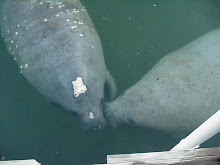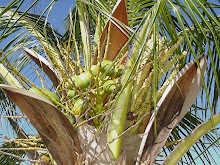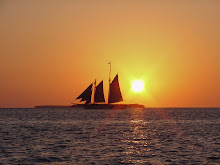"Stand at the Cumberland Gap
and watch the procession of civilization,
marching single file -
the buffalo following the trail
to the salt springs,
the Indian
the fur trader and hunter,
the cattle raiser
the pioneer farmer -
and the frontier has passed by."
-Frederick Jackson Turner
The final stop on our "All-Things-Boone" Summer Vacation 2015 was to the Cumberland Gap National Historic Park.
The Cumberland Gap is a narrow pass through the long ridge of the Cumberland Mountains that are within the Appalachia Mountain Range. The gap is near the junction of the states of Kentucky, Virginia and Tennessee.
In 1966, shatter cones were discovered in the Cumberland Gap area. Shatter cones naturally form only during impact events. The discovery of the Middlesboro impact structure has proposed new details in the formation of the Cumberland Gap. Less than 300 million years ago an approximately 4-mile in diameter meteorite struck the Earth, creating the Middlesboro Crater. The city of Middlesboro, Kentucky is built entirely inside the crater, hence the crater's name. The Colonel found what he believes is a piece of the meteorite when we walked along one of the paths in the park.
The Cumberland Gap was long used by buffalo and other animals as a gateway to the salt licks of Kentucky. Native Americans used the gap too as they followed and hunted the animals. The first Englishman known to have walked over the Cumberland Gap was backwoods trader Gabriel Arthur, a 1674 captive of the Shawnee Indians. Both Dr. Thomas Walker (1750) and Daniel Boone (1775) explored "Kaintuck" by following the already existing Warriors' Path north.
For Centuries, the Cherokee and the Shawnee traveled through the Cumberland Gap along a game trail known by the Shawnee as Athiamiowee (Path of the Armed Ones or The Great Warrior's Path). Both tribes used the path in and out of Kentucky (their hunting grounds). Bitter enemies, the two tribes regularly attacked one another.
On March 10, 1775, Daniel Boone and around 30 other ax-wielding road cutters (including his brother and son-in-law) set out from present-day Tennessee to blaze what would become known as the Wilderness Road. They traveled north along a portion of the Great Warrior's Path. As many as 300,000 settlers traveled along the Wilderness Road from 1775 to 1810.
Some parts of the Warrior's Path were still rough and narrow. The Colonel and I did not see another soul as we followed the path (I was remembering the sign at the visitor's center that mentioned Black Bears in the area. I did not trust my scatology skills...what exactly did fresh Black Bear scat look like?...thank God we did not run into any bears).
Before we walked the Warrior's Path we made a trip to the "saddle" of the Cumberland Gap (the exact place where the trail passes through the mountain pass). We knew we had arrived at the saddle because we could feel the trail stop going uphill and begin going downhill.
We saw only one other person near the saddle. It was an elderly gentleman who was walking briskly towards us. He told us we were nearly there. He must have been part mountain goat...he was not even slightly winded nor did he have a glimmer of sweat on his aged brow as he passed by. He looked at home in the mountain pass. The Colonel and I on the other hand hail from flat Florida...we walked, not briskly and we breathed a bit harder than the old man...but we made it!
During the Civil War, both the Union Army and the Confederate Army used the Wilderness Road. The Cumberland Gap changed hands four times throughout the war. Fort Lyon (Confederate) overlooked Virginia and Tennessee while Fort McCook (Union) overlooked Kentucky.
General Grant was so taken by the Wilderness Road he said, "With two brigades of the Army of the Cumberland I could hold that pass against the army which Napoleon led to Moscow."
While at the park The Colonel and I also visited the Pinnacle Overlook (2,440 ft.). There we could see Kentucky, Tennessee and Virginia. The vistas were beautiful.
What a gorgeous and very historical ending to our "All Things Boone" vacation.
During the Civil War, both the Union Army and the Confederate Army used the Wilderness Road. The Cumberland Gap changed hands four times throughout the war. Fort Lyon (Confederate) overlooked Virginia and Tennessee while Fort McCook (Union) overlooked Kentucky.
General Grant was so taken by the Wilderness Road he said, "With two brigades of the Army of the Cumberland I could hold that pass against the army which Napoleon led to Moscow."
While at the park The Colonel and I also visited the Pinnacle Overlook (2,440 ft.). There we could see Kentucky, Tennessee and Virginia. The vistas were beautiful.
What a gorgeous and very historical ending to our "All Things Boone" vacation.




















































































